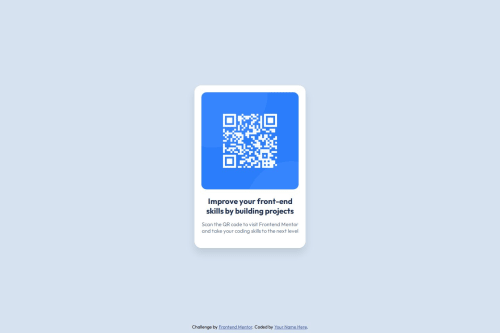Website build for the first project using Flexbox

Solution retrospective
I'm proud that I completed my first Frontend Mentor project and was able to submit it correctly. I learned how to set up the project structure, upload my solution to GitHub, and publish it using GitHub Pages.
If I were to do it again, I would focus more on refining my layout using better spacing, box shadows, and more attention to design details. I also plan to get more comfortable using CSS Grid and improving my responsive design skills in future projects.
What challenges did you encounter, and how did you overcome them?The biggest challenge was understanding how to correctly translate the provided design into code, especially getting the spacing, alignment, and sizing to match as closely as possible. I also had to adjust my understanding of how to center elements vertically using Flexbox and vh units.
I overcame these challenges by researching best practices, reading documentation, and getting feedback during the process. I learned a lot about using box-sizing: border-box and how important consistent spacing is to achieve a better visual result.
I would appreciate any feedback on my layout structure and CSS organization. Since this is my first Frontend Mentor project, I'm still learning how to improve my spacing, centering, and general code cleanliness. Any tips on better practices for Flexbox and how to structure CSS for small projects would be very helpful.
Please log in to post a comment
Log in with GitHubCommunity feedback
No feedback yet. Be the first to give feedback on Heriberto Fabian Santiago's solution.
Join our Discord community
Join thousands of Frontend Mentor community members taking the challenges, sharing resources, helping each other, and chatting about all things front-end!
Join our Discord